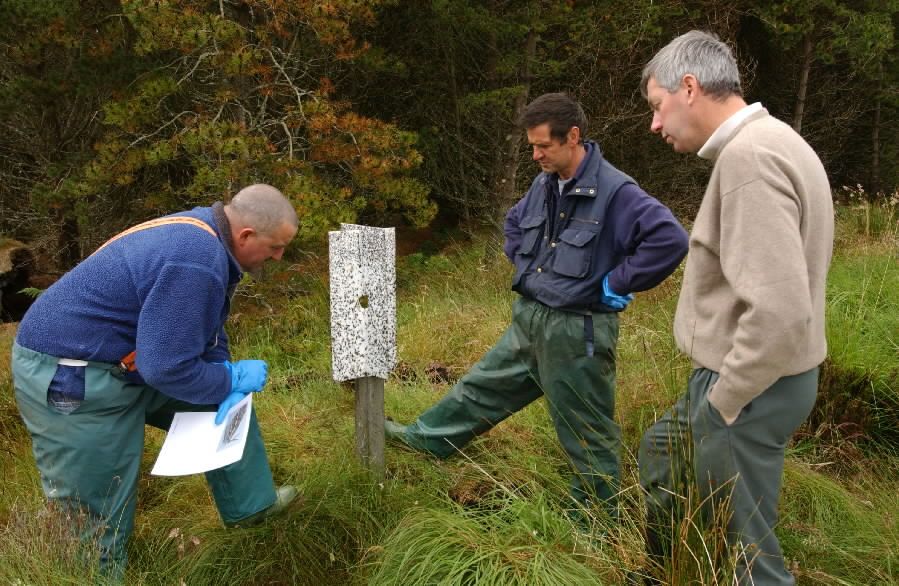We use some essential cookies to make this website work.
We’d like to set additional cookies to understand how you use forestresearch.gov.uk, remember your settings and improve our services.
We also use cookies set by other sites to help us deliver content from their services.

Landowners and managers are being urged to change their behaviours and practice to increase forest resilience, this research describes some of the barriers to change including the different attitudes and beliefs of different kinds of land managers around uncertainty and risk, and the need for information and guidance which takes...
Peatlands are a globally significant store of carbon During the second half of the 20th century new planting techniques combined with tax incentives encouraged commercial forestry across large areas of peat bog in the UK, particularly in the Flow Country of northern Scotland. Such planting was controversial and was ultimately...
More biodiverse woodlands are better able to resist or adapt to threats, such as climate change. This enhanced resilience supports the continuity of woodlands and the ecosystem services they provide. Biodiversity is the variation at different levels of biological organisation - the genes within a species; the species within a...
Overview Woodland creation and management deliver a wide range of environmental benefits. The extent of those benefits is determined by a range of factors, including the type of woodland, the way it is managed, and its position in the landscape. This Research Note summarises current evidence on how the management,...
Report giving a snapshot of the state of urban tree management by local authorities in Scotland. By A. van der Jagt and Anna Lawrence What’s of interest If your organisation has an interest in working with us on collaborative research related to greening brownfield or contaminated sites then please email:...
The Defra Group Personal Biosecurity Behaviours (DGPBB) project aims to provide personal biosecurity guidance and training across relevant Defra group organisations. Forest Research have conducted an evaluation of the training delivered so far, through an online questionnaire before and after the training, and in-depth interviews. Results, as presented in this...
This Research Note summarises recent research on the carbon balances of two forest stands: an upland Sitka spruce plantation in Harwood Forest in the northeast of England, and a lowland deciduous oak plantation in Alice Holt Forest in southeast England.
Forest Research was commissioned by Forestry England to carry out a desk-based GIS exercise to determine the potential opportunities of implementing NFM measures in 4 forest areas in the Derwent Catchment. The study focused on the Parkwood Isel, Howgill and Messengermire, Setmurthy and Matterdale forest areas. A desk-based GIS exercise...
Urban forests provide ecosystem services that contribute to human health, liveability and sustainability. The management of trees influences the delivery of these ecosystem services and thus helps determine the total benefit provided by an urban forest. This Research Note summarises two Research Reports that assessed the delivery of regulating ecosystem...
This Research Note provides an investigation into private woodland owners’ and managers’ understanding of resilience in regard to forest and woodland management in the UK.
By Caroline Kilbride, Jane Poole, Tony Hutchings, Olga Rodriguez-Walters, Danielle Sinnett, Andy Brunt and Andy Moffat. CL:AIRE Research Bulletin 7. What’s of interest If your organisation has an interest in working with us on collaborative research related to greening brownfield or contaminated sites then please email: landrec@forestry.gsi.gov.uk Related pages Brownfield...
A range of biotechnological tools has been used by Forest Research to enhance the efficiencies of research and development programmes associated with tree breeding and genetic conservation. This Information Note presents some examples where such tools have been applied. These include enhancement of flowering in conifers, assessment of the efficiency...
Cookies are files saved on your phone, tablet or computer when you visit a website.
We use cookies to store information about how you use the dwi.gov.uk website, such as the pages you visit.
Find out more about cookies on forestresearch.gov.uk
We use 3 types of cookie. You can choose which cookies you're happy for us to use.
These essential cookies do things like remember your progress through a form. They always need to be on.
We use Google Analytics to measure how you use the website so we can improve it based on user needs. Google Analytics sets cookies that store anonymised information about: how you got to the site the pages you visit on forestresearch.gov.uk and how long you spend on each page what you click on while you're visiting the site
Some forestresearch.gov.uk pages may contain content from other sites, like YouTube or Flickr, which may set their own cookies. These sites are sometimes called ‘third party’ services. This tells us how many people are seeing the content and whether it’s useful.